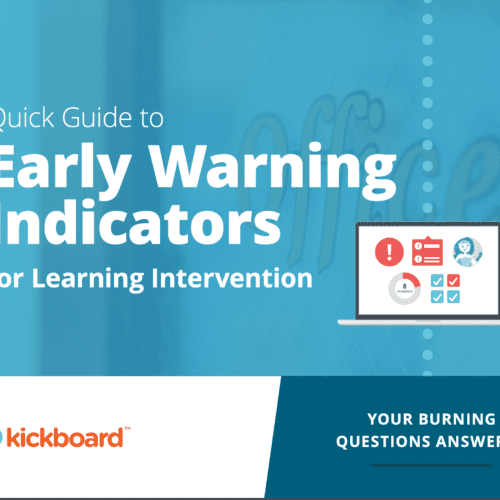
However, you need to avoid a number of pitfalls in order for your case studies to have optimal impact. Below are common blunders that businesses make and tips on how to avoid them.
1. Not Having Your Sales Force Continually Look for Opportunities
If your sales or business development people are not constantly on the lookout for potential case study candidates, chances are that they’ll have to scramble when you finally ask. That could very well result in their simply suggesting a random client who made a positive comment rather than someone they know has seen real success.
When your sales staff know how customers have used your product or service and how well things are going, they may even let you know of worthy candidates before you ask so that you end up with a file of choices right at hand. An added benefit is that it gives them a reason to intermittently follow up with clients with a friendly “How’s it going?” That means they’ll learn of any problems and ensure things are taken care of quickly. Plus the customer will feel that your business really does care about how they’re doing, which will go a long way in helping you with customer retention and referrals.
2. Not Providing Background Information Beforehand
Letting a case study writer go into an interview without giving him or her background on your client is a bad idea. Of course, writers should do their own research, but your salespeople and other staff members who’ve interacted with the customer may have useful details that can help the writer determine possible angles for the case study and perhaps generate additional questions to take the interview in the appropriate direction. Failing to share background information could lead to a meandering interview as the writer tries to figure out what is and isn’t important to the case study.
That lack of information could also lead to unpleasant surprises. I’ve conducted interviews during which it became clear that a customer had not seen any measurable results from using the product/service. In a case like that, having the interviewee give anecdotes about the benefits for staff and client base or having quotes can help make up for the lack of quantitative data. However, it’s a good idea to follow up in the future to obtain that data and include it in a revision and reprint of the case study. And that brings us to the next blunder…
3. Not Ensuring That There Are Proven Results
The objective of every case study is to show that the product/service was a sound investment in some way. That usually means showing a positive outcome such as a positive ROI, increased market share, enhanced efficiency or effectiveness, etc. Sometimes, the outcome is qualitative rather than quantitative, for example, an improvement in employee morale. As mentioned above, using quotes and brief anecdotes from members of the affected group can help substantiate that claim, but if you look hard enough, you may be able to find a measurable metric that demonstrates the direct or indirect impact of the positive outcome, e.g. fewer accidents, less absenteeism, increased productivity, etc.
However, showing a positive outcome only works when there’s actually a proven result to show. I’ve mentioned finding out that there are no measurable results that an interviewee could share, but I’ve also come across the pitfall of the client having nothing but good things to say about the product, but industry reports showing a decline in the client’s performance even though the product had been in use for a few years.
4. Not Considering Your Audience(s)
Case studies provide valuable support when the customer is making an expensive and/or complex buying decision. However, a lot of people in a business contribute to the final purchasing decision for expensive and/or complex purchases, and they are not all interested in the same attributes of your offer. For example, people in the higher levels of management are more likely to be interested in the big picture e.g., how time and money will be saved or how you can facilitate their strategy. People who are using the product and service will want to know about its ease of use, how it will make their work life better, product support, etc.
It’s important to know what level of decision-maker is targeted as the recipient of the case study. You can tailor specific case studies for each level, create one that has enough details to satisfy everyone, or include a call-to-action that points a another resource that contains more of the information that appeals to a particular audience segment.
5. Not Deciding on an Angle
This mistake is closely associated with mistake #4. The journalistic definition of an angle is “the point of view from which copy is written, especially when the copy is intended to interest a particular audience.” Basically, it’s the theme of your story, and it helps make your case study distinct. Also, since different people are interested in different attributes of your product/service, it’ll capture the attention of a particular subgroup of your audience. If each of your case studies goes no farther than the general premise that a customer implemented your product/service to improve performance, they’ll be deadly dull and they’ll fail to connect with the particular circumstances of the various members of your audience.
An angle can focus on one of the following:
- Customer type and/or size
- The challenge or need
- How the product/service was used
For example, a client may want to buy a piece of software that helps them overcome a regulatory hurdle, resolves a hitch in their work process, or serves as a component of a whole new initiative or work practice. Others may be wondering how well the software works for a business their size or in their industry. And others may be more interested in the professional development support offered by the software provider, the software’s ease of use, security features, etc. I’ve even written a case study highlighting how a piece of software helped an organization boost employee retention. You can mention other benefits and challenges, but the piece shouldn’t lose its focus on whatever angle you choose.
6. Not Providing an Appropriate Level of Detail
I know of a company that tried to make their case studies timeless and universally appealing by eliminating details such as the specific years that events occurred, the scope of the client’s operations, geographic locations, etc. They figured that omitting those details could make their case studies universally relevant and appealing, which would mean that they could avoid future editing and reprinting costs. However, details such as those just mentioned help an audience feel as if your customer’s story really happened. It did happen, of course, but since the audience wasn’t there, we have to create a feeling of authenticity so that they can more easily visualize the situation you’re describing. Being vague leaves the audience feeling dissatisfied and wondering what you’re trying to hide.
On the other side of the coin, irrelevant or nonessential details bog down your case study without adding any real substance. Your audience does not need a blow-by-blow account of how the subject of the case study implemented your offering. Focus on the main points or steps that involved or complemented your product/service, and of course, the benefits and results that were produced.
If you ever find yourself wondering what details should be included, think about the case study’s format and the channel and situation in which it will be delivered. That should dictate the length of your content and will, in turn, also help you decide on the level of detail. If your prospect is very likely to skim, you need to keep things short and to the point.
Another tactic you can use is including everything you want in your first draft and then cutting away excess during editing. That means you can’t keep something in the case study just because you like it. Always focus on whether the detail you’re considering will support or drive the story. This is where a round of reviewers can come in handy; if your ego is causing you to include a detail about awards that your business has won even though that detail adds nothing to the story, hopefully one of them will be able to tactfully point that out that fact.
Conclusion
When you avoid these six case study pitfalls, you will be well on your way to developing a piece that will serve as credible third-party endorsement of your product/service. For more details on how to make your case study into a truly compelling customer success story, click here.








